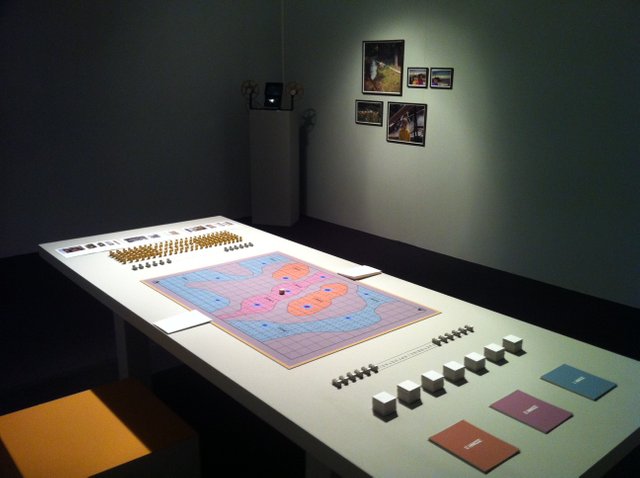Chinese hand-scrolls as a medium have a handful of wonderful, particular nuances, not least of which is the colophon: additional sheets of paper or silk attached to the scroll, which provide commentary from collectors, viewers, friends of the artist etc. Lines of praise, sketches of the artist in work, historical context and other such items fill the colophon, and above all else, those who purchase and later pass on the scroll, as well as some who view it even a single time leave a stamp bearing a signature, often in a size correlating with pride, as another testament to the work’s effect on its viewer. While in galleries today, pieces of any type will often be displayed with some some brief comments or data, there is little else which comes close to the importance or effect of the colophon. This kind of interactivity with the displayed work has been lost to us in a general sense, and indeed to seems to go against many of our modern concepts of how one should view a piece of art. Despite the growing presence of games, both digital and physical, in gallery spaces, their interactivity seems relegated to whatever systems the creator allows, without room for change or lasting impact.

Children of Unquiet, Mikhail Karikis
In online games, particularly in virtual worlds, which have existed in some form since the late 1970s, the participating players are considered a part of the final product: the vistas, writing, and game mechanics all share a pedestal with the actual players viewing the game together, and the systems by which designers allow players to interact can be designed with meaningful intent to deliver a desired experience. Richard Bartle was arguably the first to really break down the motivations behind player participation in so-called multi-user games, and the effects certain types of players have on others in his 1996 paper Players Who Suit MUDs. Since then, his findings have been used to balance player populations in potentially all types of online games, from MMOs to arena shooters. The underlying concept behind his study and the designs it has inspired is that player interaction is a part of the piece that cannot be separated from the actual work the developers create. But as mentioned above, this is an element that seems to go against how we expect other media to be displayed. In Mikhail Karikis’ display Children of Unquiet (2013-2015), a board game was included alongside other pieces, and two people at a time were meant to play against one another. The actual piece was not greatly effective, and the apparent need for the game to be “game-y” (i.e. have arbitrary win-states, competitions) caused it to stumble in its intent, but above all else, in a game meant to show the industrialization of a land over time and the effect it has on people, it seems almost damning that the game would reach its conclusion and all pieces be reset after only two people have seen it.
It is perfectly reasonable to say that the artist’s original work and intent should be clear, but in the right context, a modern colophon appended to a game, digital or physical, just radiates untapped potential in my view. In commercial games with multiple users, interaction between players is the ever-changing fabric of the game, or the lens through which the rest of the piece is viewed, and this enhances the existing work much in the same way poems and lines of rhapsody enhance the viewing of a handscroll. In a gallery, it is difficult to properly immerse viewers in a piece like a short film or audio set-up. Often times soundproofed rooms will be set aside for these, and in media that requires viewers to remain audient, this is effective. But games do not ask people to remain audient, it requires interaction, and designers and artists are made to find ways to make interaction immersive. To me, in most settings this means allowing players to create tangible change in a piece, change that the creator cannot necessarily anticipate, but can control and direct through the rules and systems they make their games with. While games that reset and allow players to experience them from start to finish do have a place (and given the historical nature of Children of Unquiet there may very well have been grounds to conduct it as such), letting players leave a mark on a game can help them frame their own choices, and the nature of the game, in new ways.
Downvoting a post can decrease pending rewards and make it less visible. Common reasons:
Submit
Downvoting a post can decrease pending rewards and make it less visible. Common reasons:
Submit
Congratulations @xiaoxin! You received a personal award!
You can view your badges on your Steem Board and compare to others on the Steem Ranking
Vote for @Steemitboard as a witness to get one more award and increased upvotes!
Downvoting a post can decrease pending rewards and make it less visible. Common reasons:
Submit